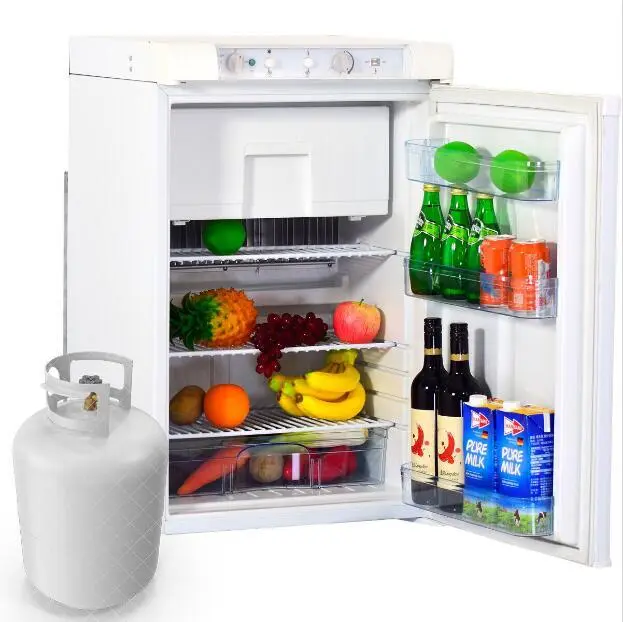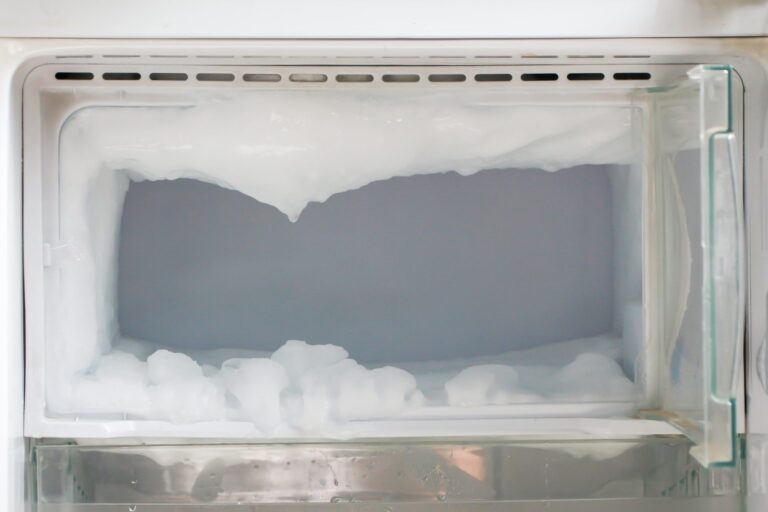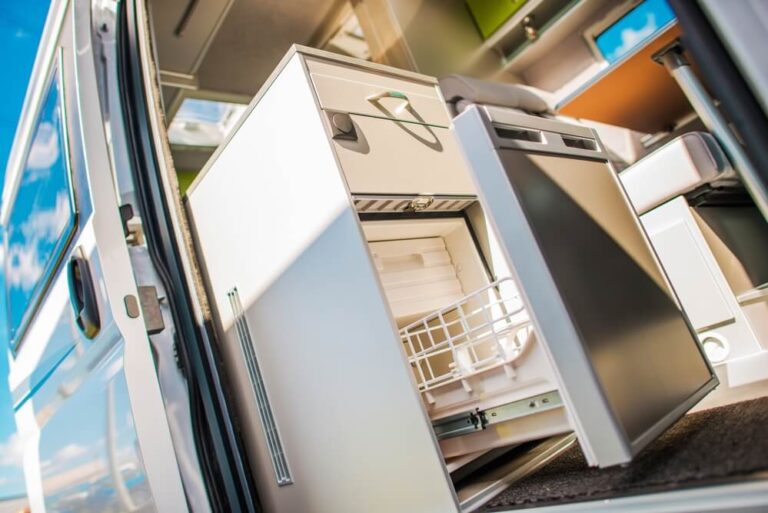Understanding How Much Propane Does an RV Fridge Use?
Ah, the open road, the scent of adventure, and the promise of new horizons – it’s the life of an RVer. But as I embark on journeys that take me off the beaten path, I’ve come to realize that understanding the intricate details of my RV is like having a secret map to maximize my experiences. And today, dear fellow travelers, we’re about to unlock one of those secrets – the propane consumption of RV fridges.
Why Should I Care About Propane Usage?
As I navigate through the twists and turns of RV living, I’ve learned that propane isn’t just a fuel; it’s a lifeline. It powers not only my stove and water heater but also the heart of my home-on-wheels – the refrigerator. And let’s be honest, knowing how much propane my fridge consumes isn’t just about crunching numbers; it’s about optimizing my resources. It’s about ensuring that my provisions stay fresh and cool without draining my propane supply unnecessarily. It’s about being a responsible traveler, aware of how my choices impact both my comfort and the environment.
A Glimpse into the World of RV Refrigerators
As the sun sets over the campground, and the stars come out to play, I find solace in the gentle hum of my RV refrigerator. This compact yet mighty appliance isn’t just a box that keeps my food cold – it’s a sophisticated piece of engineering that understands the delicate dance between heat and cooling. Using a process known as absorption refrigeration, it harnesses the power of propane (among other energy sources) to maintain the perfect temperature for my perishables.
But here’s the twist that makes me appreciate it even more – my RV fridge is a bit of a multitasker. It can switch between propane, electricity, and even 12-volt power to adapt to my surroundings. Whether I’m parked at a full hookup campground, boondocking in the wilderness, or cruising along the highway, my trusty fridge keeps my culinary treasures safe.
Understanding Propane-Powered RV Fridges
Let’s dive into the cool world of RV fridges that run on propane. It’s like peeking behind the scenes of a magic show, where the trick is keeping your food cold. So, join me as we uncover the secrets of how these fridges work.
Absorption Refrigeration: The Coolest Science Experiment
Okay, picture this: my RV fridge is like a scientist’s lab, and the ingredients are ammonia, hydrogen gas, and water. When I light up the propane flame, it sets off a chain reaction. Ammonia vaporizes, teams up with hydrogen gas, and they waltz their way into a different spot, creating a chilly zone. It’s like turning heat into cold, and I’m here for it!
Two-Way and Three-Way Fridges: The Energy Dance
Now, let’s talk about the types of fridges that can dance to different beats. There are two-way and three-way fridges, and they’re quite the performers.
Two-Way Fridges: Duo Power Imagine my fridge as a superhero with two power buddies: 12V DC and propane. When I’m on the road, the 12V DC keeps things frosty. But when I’m off-grid, propane takes the spotlight, making sure my snacks don’t get soggy.
Three-Way Fridges: The Triplet Wonders Next up, the three-way champs! These fridges can boogie to three different songs: 12V DC, 120V AC (when I’m plugged in), and, of course, propane. No matter where I’m parked, my fridge knows how to groove with the energy it’s got.
Factors Affecting Propane Consumption
Temperature Settings and Adjustments: Finding the Sweet Spot
First things first, the temperature settings. I’ve realized that the colder I set my fridge, the harder it works – and that often means it’s hanging out with my propane supply a bit more. So, I’ve learned to strike a balance between keeping things cool and not overburdening my propane usage. It’s like finding that perfect thermostat setting in your house – not too hot, not too cold, but just right.
Frequency of Door Openings: Peekaboo, Propane Usage
I’ve had my fair share of peekaboo moments with my fridge. Opening the door to grab a snack is like saying, “Hey, propane, come out and play!” Every time I peek inside, my fridge has to work a little harder to cool things back down. So, I’ve become more mindful about minimizing my fridge-door antics. It’s not just about saving propane – it’s about keeping my snacks happy and cool.
Check this guide about how to keep the RV refrigerator doors closed while driving
Ambient Temperature and Weather Conditions: Nature’s Propane Partner
Nature has a say in this propane game too. On hot days, my fridge might need to put in extra effort to keep things chilly, leading to a little extra propane usage. But when the weather cools down, my fridge can kick back and take it easy. It’s a reminder that Mother Nature and my propane are in cahoots, and I need to adapt accordingly.
Insulation and Overall RV Efficiency: Keeping It Cozy
Just like a warm blanket on a chilly night, insulation is key. A well-insulated RV keeps my fridge’s cool air from escaping, making it work less and saving on propane. The same goes for the efficiency of my RV as a whole. If my RV is a lean, mean energy-saving machine, my fridge doesn’t have to rely as much on propane to keep things frosty. Also make sure things are little organized inside.
How Much Propane Does an RV Fridge Use
Dometic RV Refrigerators: The DM Series Takes the Stage
Ah, Dometic – a name that resonates with RVers far and wide. Their DM series of refrigerators, including models like the DM2652, DM2662, and DM2862, have become synonymous with reliability and innovation. These fridges come in various sizes, catering to different needs and RV spaces.
Average Propane Consumption: Finding the Sweet Spot
As I ventured deeper into the Dometic world, I uncovered valuable insights into their propane usage. On average, these fridges consume approximately 1.5 to 2 pounds of propane per day when running on gas mode. But here’s where it gets interesting – the consumption varies based on factors like temperature settings, frequency of use, and even the age of the fridge. So, it’s like finding the right rhythm in a dance of efficiency.
Norcold RV Refrigerators: The N Series Steps In
Norcold, another household name among RV enthusiasts, introduces its N series of refrigerators, featuring models like the N621, N641, and N811. These fridges boast advanced technology and a reputation for sturdy performance. I also advice you to check the Norcold N Series user manual
Propane Usage Comparisons: Dometic vs. Norcold
Now, let’s put Dometic and Norcold head-to-head in a propane consumption showdown. Generally, Norcold fridges are known to have slightly lower propane consumption compared to Dometic models. While the difference might not be drastic, it’s a detail that RVers who love crunching numbers and optimizing their resources can appreciate.
Other Notable Brands and Models: Exploring the Diverse Landscape
Beyond Dometic and Norcold, the RV fridge landscape is a rich tapestry of options. Brands like Atwood and Smad have their own lineup of refrigerators that cater to different preferences and needs.
Propane Consumption Variations: The Brand Factor
Here’s where things get intriguing – propane consumption varies not only between models but also between brands. Factors like insulation quality, technology, and overall design play a role in how much propane a fridge uses. While some RVers might swear by a particular brand’s efficiency, it’s essential to remember that individual preferences and usage patterns can influence the overall experience.
Measuring Propane Usage for RV Refrigerators
In my quest for propane wisdom, I’ve discovered a variety of methods to keep tabs on how much gas my fridge is sipping. It’s like having a fuel gauge for my culinary treasures.
1. Built-In Propane Meters: Some RV fridges come equipped with built-in propane meters. These nifty devices give me real-time insights into how much propane my fridge is using. It’s like having a digital companion that lets me know when it’s time for a refill. Keep an eye out for this feature when shopping for fridges.
2. External Propane Gauges: If my fridge isn’t equipped with a built-in meter, fear not! External propane gauges are here to save the day. These handy devices attach to my propane tank and provide an easy-to-read display of my propane levels. A quick glance, and I’m in the know about my fuel status.
Calculating Propane Usage: Gallons or Pounds, It’s All in the Numbers
Now, let’s get down to the nitty-gritty of numbers. When it comes to measuring propane consumption, I’ve got two main units of measurement to choose from: gallons and pounds.
1. Propane Usage in Gallons: I can calculate my fridge’s propane consumption by tracking how many gallons of propane I’ve used over a specific period. With the help of my propane meter or gauge, I can simply note the starting and ending readings, and voilà – I’ve got my consumption in gallons.
2. Propane Usage in Pounds: Alternatively, I can think in terms of pounds. Propane weighs about 4.24 pounds per gallon, so I can use this conversion factor to estimate my propane usage. If I know how many pounds I’ve used, I can easily translate that into gallons and vice versa.
Tips for Optimizing Propane Usage
1. Proper Temperature Settings: Finding the Goldilocks Zone
Ah, the art of balance! Just like Goldilocks seeking the perfect porridge, I’ve learned to find the ideal temperature setting for my fridge and freezer compartments. Not too cold, not too warm – just right. A setting that’s too chilly means my fridge has to work harder, leading to more propane usage. So, I’ve become a temperature whisperer, ensuring that my provisions stay fresh without making my fridge go into overdrive.
2. Pre-Cooling Food Items: A Cool Start Is a Propane-Smart Start
Picture this: I’m about to hit the road, and I’ve got a batch of drinks and snacks ready to load into my fridge. But wait! Before I stash them away, I give them a head start by pre-cooling them in my home fridge. By starting with chilled items, I’m giving my RV fridge a break from working overtime to cool them down. It’s like giving my fridge a high-five for being efficient.
3. Minimizing Door Openings: Peek Less, Save More
I’ve realized that every time I open my fridge door, I’m inviting the warm air from outside to join the party. And you guessed it – my fridge has to put in extra effort to bring the temperature back down. So, I’ve become mindful about minimizing door openings. I plan ahead, grab what I need in one go, and keep the cold air inside where it belongs.
4. Keeping Items Organized: The Orderly Pantry Pays Off
An organized fridge is a happy fridge – and a propane-savvy one too. When items are neatly arranged, I spend less time rummaging around, and my fridge spends less time working to maintain its cool. I’ve designated specific spots for different food categories, making it easy to locate what I need. Plus, I’ve got bonus points for not accidentally leaving the door open while I search for that elusive condiment.
5. Inspecting and Maintaining Components: Fridge TLC for the Win
Just like any relationship, my fridge and I need to nurture our bond. Regular inspections and maintenance keep my fridge’s components in top-notch condition. I check for any leaks, ensure the seals are snug, and clean out dust and debris. A well-maintained fridge is a happy and efficient fridge, which ultimately translates to lower propane usage.
As the road unfolds before me, I’ll keep a watchful eye on my propane gauge, remembering that every choice I make is a ripple in the grand tapestry of my journey. It’s not just about how much propane my RV refrigerator consumes; it’s about the stories it preserves, the meals it nurtures, and the memories it keeps cool along the way. Here’s to the thrill of discovery, the joy of optimization, and the endless possibilities of the open road. Safe travels, my propane-savvy companions! 🚐🍃🔥






